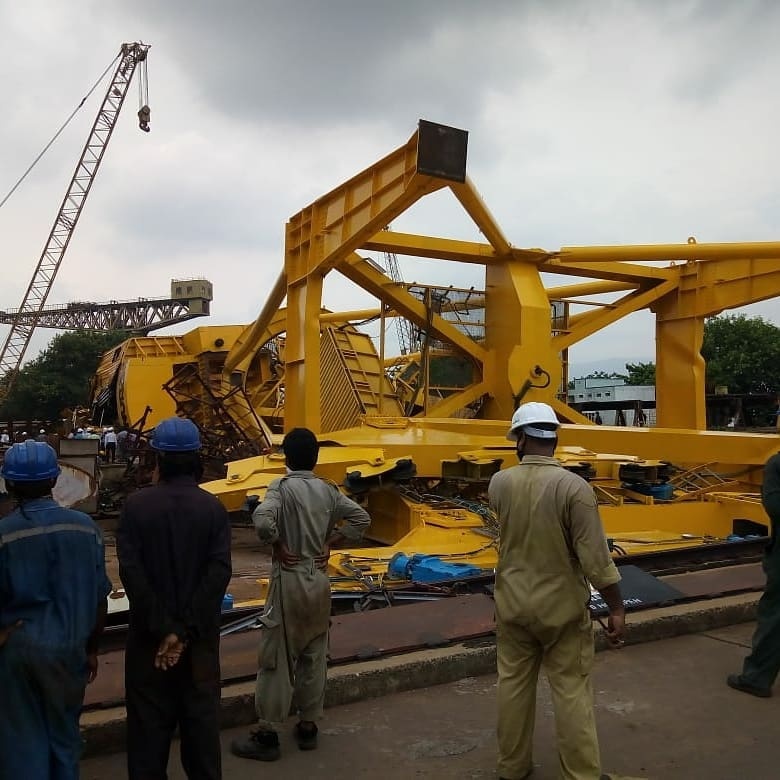28 January, 2022In 2021, the Indian manufacturing industry was beset with accidents, with an average of seven accidents reported per month, killing over 162 workers and leaving others disabled for life or badly injured. A number of accidents in the first few weeks of the new year shows that this trend is likely to continue.
On 1 January 2022, four workers were killed in an explosion at a fireworks factory in Virudhunagar district of Tamil Nadu. The explosion led to the collapse of the building and left several workers critically injured. In a similar incident on 5 January, a blast at another firecracker manufacturing unit in Virudhanagar killed three workers.
On 6 January, six workers were killed and 29 other employees of Vishwaprem Mill - a textile dyeing and printing factory - had to be hospitalised after inhaling toxic gas from the Sachin creek in Surat district. The Gujarat Pollution Control Board confirmed that sodium hydrosulphide and sodium thiosulphate were illegally discharged into the natural creek. While the National Green Tribunal has taken up the matter, action from local authorities remains lax.
There was another a chemical leak in Mangalore on 11 January. Twenty employees of a fish processing unit were admitted to a private hospital in Mukka, following a leakage of ammonia. Indian affiliates of IndustriALL Global Union also report accidents in the Northern Coalfield Limited (NCL) mining area: on 10 January a diesel tanker caught fire in Amlorhi Project area in NCL, and on 12 January, a contract worker was killed while cleaning a bunker.
Accidents are a constant feature of working life. On 23 January, one worker was killed and four others were severely injured in Megafine Pharma Company site in Lakhmapur-Nashik due to a reactor fire.
In the last five years, the government has relaxed inspections and licensing to allow self-certification and has exempted some companies from reporting on health and safety to ease business and support small enterprise. Low investment in health and safety, old and decrepit machinery and a lack of training for operating machinery adds to the danger to workers. Industrial accidents sky rocketed once factories resumed work after the three-month long COVID-19 lockdown.
In India, the availability of health and safety inspectors is low in comparison to the density of factories. The effective implementation of health and safety standards has long been a demand of unions and workers.
Sanjay Vadhavkar, executive committee member of IndustriALL said,
“In April, 2021, the Ministry of Labour and Employment set up three expert panels to investigate the causes of the rising accidents and review the existing policies and practices on safety, health and working conditions. However, the concerns and recommendations of trade unions and workers were not addressed. We demand that the central and the state governments disclose all the relevant information on accidents, make the investigation reports public, and fix responsibility on either employers or concerned government authorities.”
G. Sanjeeva Reddy, president of the Indian National Metal Workers’ Federation
(INMF-INTUC) and executive committee member of IndustriALL said,
“We are saddened and outraged by these accidents and this clearly shows serious lapses in the safety measures. We demand a high-level judiciary inquiry looking into these frequent accidents, a strict inspection of factories and mines in coordination with workers' representatives, health and safety laws must be strengthened and implemented in true spirit and a complete abolition of contract system.”
Kemal Özkan, IndustriALL assistant general secretary, said,
“Such frequent industrial accidents in India is a matter of serious concern and clearly shows the dilution of safety regulations and non-compliance with safety rules. IndustriALL calls on the Indian governement to urgently review the existing safety laws and rules in the country and develop an integrated action plan with the help of the trade unions, to ensure that workplaces are safe and fire-proof, and not a death trap.”
